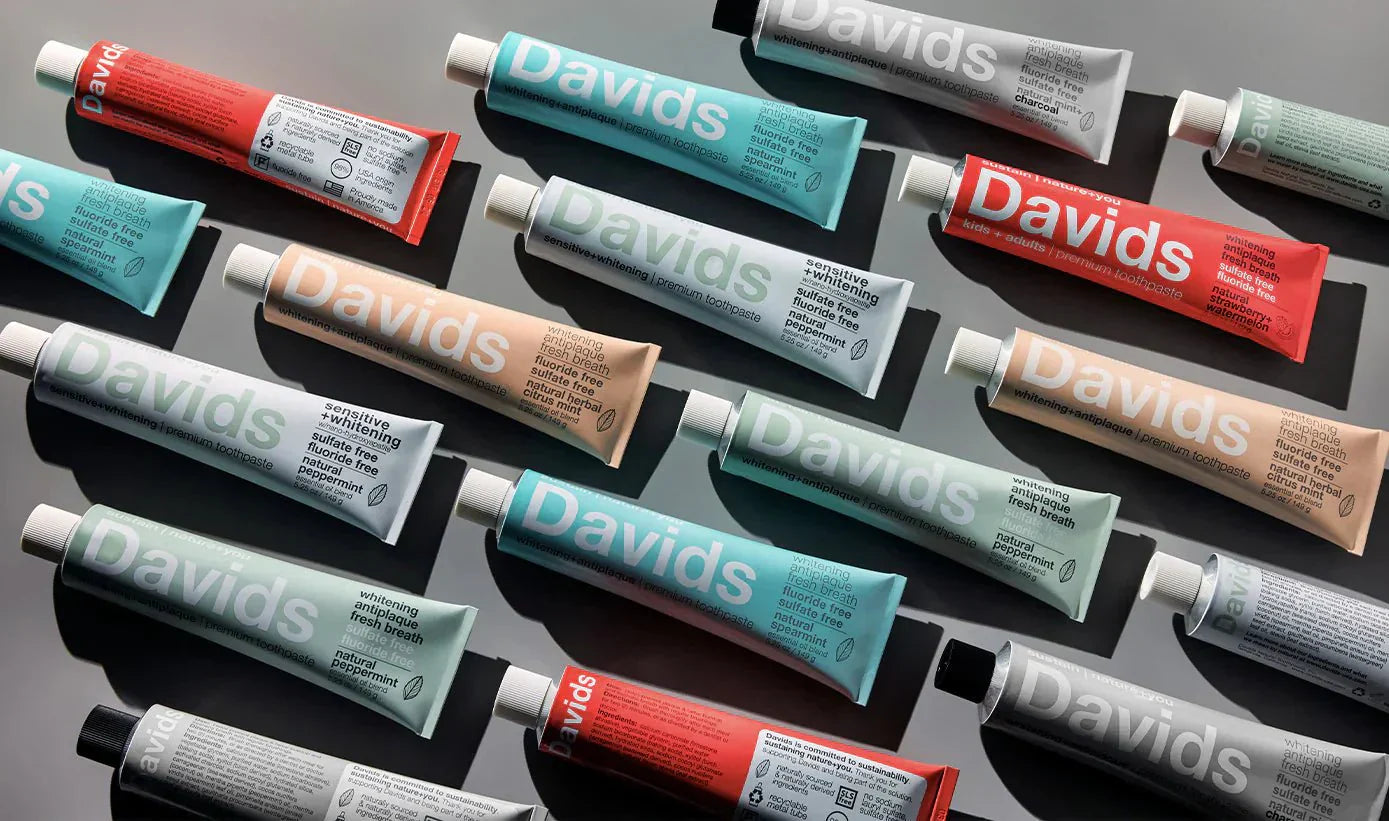With so much gossip floating around about sugar substitutes, we don’t blame you if you feel a bit overwhelmed and confused. When it comes to toothpaste, these sweeteners have always played a critical role. After all, you want your toothpaste to taste perfectly sweet....yet you know sugar is an infamous culprit when it comes to tooth decay.
How can you achieve that perfect balance of a tasty toothpaste that’s actually good for your long term oral health? In our book, the answer is xylitol. Not only is this plant-based sweetener just as sweet as sugar, but it has some incredible (scientifically documented) benefits when it comes to your oral health.
To help you feel extra confident and comfortable about the idea of xylitol in toothpaste, we’re diving into the nitty gritty of this incredible ingredient. What is it? Where does it come from? Is it safe? Let’s find out.
what is xylitol?
Xylitol (pronounced zai · luh · taal) is a natural sweetener derived from plants + known for its sweet taste and ability to fight bad bacteria and tooth decay. It does so by enhancing saliva production and “starving” harmful bacteria (namely, Streptococcus mutans) in your mouth.
Xylitol was first discovered in 1891, but it didn’t gain popularity until World War II when Finland needed it to replace all the sugar that was going towards war efforts. Once the war ended and they resumed regular sugar consumption, Finland noticed that tooth decay was on the rise. This inspired them to examine xylitol, and in the 70s, they discovered that those who consumed xylitol instead of sugar experienced drastically less tooth decay! This sparked even more interest in the many benefits of xylitol in toothpaste.
is xylitol safe?
First things first, xylitol is an FDA-approved food additive, meaning it’s safe to eat (and of course, to brush with)! Research shows that xylitol is safe for long-term consumption, so you don’t have to worry about over consuming. Some people report that consuming high volumes of xylitol in your diet can lead to digestive discomfort, so we recommend testing the waters before jumping in with xylitol-filled foods. When it comes to xylitol in toothpaste, it’s safe to say you’re getting the incredible benefits without any of the side effects (assuming you’re not eating the whole tube).
One thing to note is that xylitol is not safe for dogs, so be sure to keep your xylitol toothpaste away from your furry friends!
the benefits of xylitol
Now that we know its history, let’s dive into some of the many benefits of xylitol in toothpaste.
- it fights bad bacteria: as we mentioned, research shows that xylitol “starves” bad bacteria, in turn working to minimize plaque buildup, treat bad breath, neutralize your mouth’s pH, and prevent tooth decay.
- it helps maintain microbiome balance: xylitol is a prebiotic, which means it actually feeds the good bacteria as it simultaneously starves the bad bacteria. This helps to nurture a healthy bacterial balance in your mouth and gut microbiomes...which are both extremely important for your overall health. This ability makes xylitol a very unique sweetener, as most sugars do the opposite (feed the bad, starve the good).
- it prevents dry mouth: xylitol has a refreshing cooling sensation that immediately stimulates your salivary glands. This enhanced saliva flow helps to prevent dry mouth and (again) keep bacteria from wreaking havoc on your gums, tongue, and enamel.
- it reduces inflammation: xylitol works to lower inflammation in your mouth, gut, and entire body by inhibiting the production of cytokines (small proteins that trigger your body’s inflammatory response). This is great news for your entire immune system!
As one of the only sugar substitutes that truly tastes as sweet as sugar, you can find xylitol in toothpaste (like Davids), mouthwash, breath mints, chewing gum, baked goods, gummy vitamins, some nut butters, and so much more.
When it comes to the benefits of xylitol in toothpaste, research shows that frequency and consistency of use are extremely important. Daily brushing with Davids is one of the easiest and most effective ways to add xylitol into your daily routine and experience all of its amazing benefits.
Davids, the best xylitol toothpaste
All of our toothpaste formulas contain xylitol to nourish your oral microbiome. Unlike many other companies out there who derive their xylitol from corn and beets, we source our xylitol from birch trees that grow right here in the USA (the best option for you and the environment). That’s one of many reasons we call Davids the best xylitol toothpaste.
Our xylitol toothpaste works with our other intentional ingredients (like vegetable glycerin, gentle micro-abrasives, premium peppermint oil, and hydroxyapatite) to reduce inflammation in your mouth, exfoliate your teeth, prevent dry mouth, fight bad bacteria, freshen your breath, whiten your smile, and remineralize your enamel….all without disrupting your delicate oral microbiome.
When you combine our premium xylitol with nano-hydroxyapatite (as we do in our sensitive+whitening toothpaste), the result is a remineralizing dream team unlike any other. These two amazing ingredients work together to balance your oral microbiome and remineralize your enamel for strong, bright, and healthy teeth.
As xylitol starves the bad bacteria in your mouth and stimulates saliva production, it acts as “transportation” for the nano-hydroxyapatite particles. This allows those n-ha particles to reach the corners and crevices of your mouth, delivering essential minerals to weakened (sensitive) areas of your teeth to remineralize them. Together, xylitol and hydroxyapatite penetrate your enamel to strengthen damaged and weakened layers to help slow/stop the progression of tooth decay.
Teamwork makes the (remineralizing) dream work.







